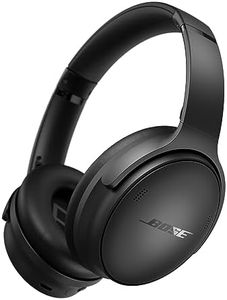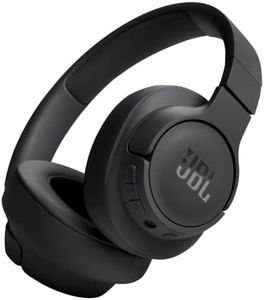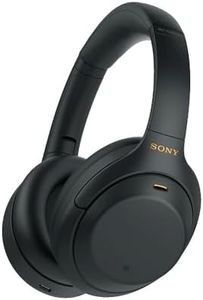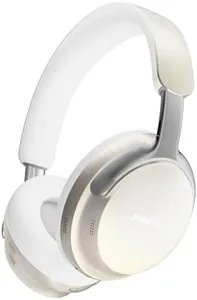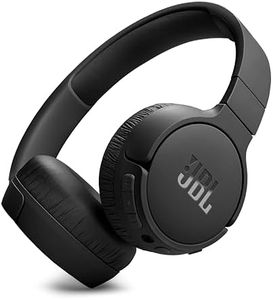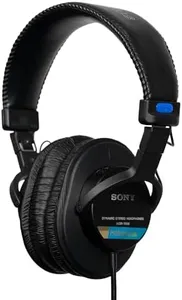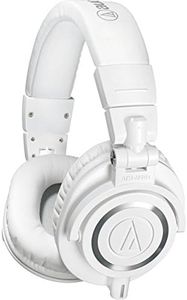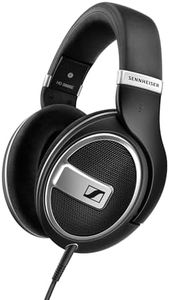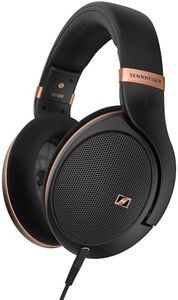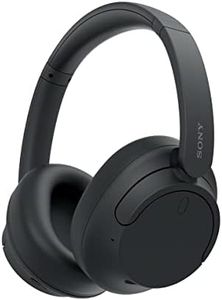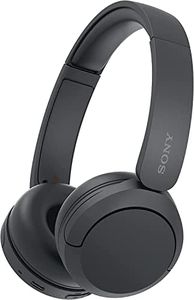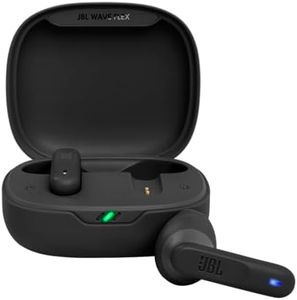We Use CookiesWe use cookies to enhance the security, performance,
functionality and for analytical and promotional activities. By continuing to browse this site you
are agreeing to our privacy policy
10 Best Bass Headphones
From leading brands and best sellers available on the web.Buying Guide for the Best Bass Headphones
When choosing the right bass headphones, it’s important to focus on what matters most for an immersive and enjoyable listening experience. Bass headphones are designed to emphasize low-frequency sounds, which is great for genres like hip-hop, EDM, and rock. However, the degree and quality of bass can vary greatly between different headphones, and there’s more to a great set than just thumping lows. To make the best choice, consider where and how you’ll use your headphones, whether for casual music listening, commuting, or even gaming, and pay attention to the features that impact bass performance and overall comfort.Driver SizeThe driver is the part of the headphone that produces sound, and its size is usually measured in millimeters. Larger drivers generally have the potential to move more air, which can enhance bass production. For bass-heavy headphones, drivers typically range from around 30mm up to over 50mm. Smaller drivers (under 40mm) can still produce good bass but may lack depth, making them more suitable for compact or portable headphones. Medium drivers (40-50mm) offer a nice balance between bass impact and overall sound quality for most users. Larger drivers (over 50mm) are often found in over-ear headphones and can produce deep, powerful bass, but they may make the headphones bulkier. Think about your comfort and listening preferences—if deep bass is your priority in a home environment, larger drivers can be ideal; for travel and portability, medium-sized drivers may be a better fit.
Frequency ResponseFrequency response describes the range of sound frequencies the headphones can reproduce, typically measured in hertz (Hz). For bass, pay attention to the lowest end of this range. A lower starting point (like 5Hz or 10Hz) means the headphones can produce deeper bass, but the human ear generally perceives frequencies above 20Hz. If you listen to music with lots of deep bass, choose headphones with an extended low frequency response—those starting below 20Hz may help, but above all, trust your ears as frequency response specs don’t always translate to real-world performance. For most users, headphones with a range of about 20Hz to 20kHz will cover all needed sounds.
Sound SignatureSound signature refers to the way headphones are tuned to emphasize certain parts of the audio. ‘Bass-heavy’ or ‘V-shaped’ signatures highlight lows and highs, making the bass and treble stand out, while ‘balanced’ signatures try to keep all frequencies even. Look for headphones described as having an ‘enhanced bass’ or ‘bass boost’ if you like punchy lows. This is especially helpful for bass-centric music. However, be aware that too much focus on bass can sometimes drown out vocals or instruments. If you enjoy a variety of genres, consider a slightly boosted or balanced sound signature for versatility.
Type (Over-ear, On-ear, In-ear)The fit of the headphones affects how you experience bass. Over-ear headphones typically create a better seal around your ears, helping to enhance and isolate bass, making them popular among bass lovers. On-ear models sit on your ears and can also deliver good bass but might let in more outside noise and lose some depth. In-ear headphones can provide strong bass if they fit snugly in your ear canal, but the experience can vary based on tip size and shape. Choose over-ear types if maximum bass and comfort at home are your main needs; go for in-ear or on-ear models if you need more portability or use them on the go.
Noise Isolation / CancellationNoise isolation physically blocks external sounds, and noise cancellation uses electronic processing to reduce background noise. Both can improve how you perceive bass, as a quieter environment lets the bass stand out more. Passive isolation comes from the headphone’s design, like tight earcups or in-ear tips, while active noise cancellation (ANC) uses technology. If you often listen in noisy environments like public transport, noise-canceling or well-isolating headphones will help you enjoy clear and deep bass.
Comfort and Build QualityBass-heavy headphones tend to be designed for immersive listening, so comfort is key for long sessions. Check for soft padding, adjustable parts, and how the headphones fit your head and ears. Heavier models may offer great bass but could be tiring to wear for hours. Durable materials also ensure your investment doesn't lose quality over time, especially since bass vibrations can stress headphone parts. Test fit and comfort whenever possible to make sure your chosen headphones suit your usage habits.
